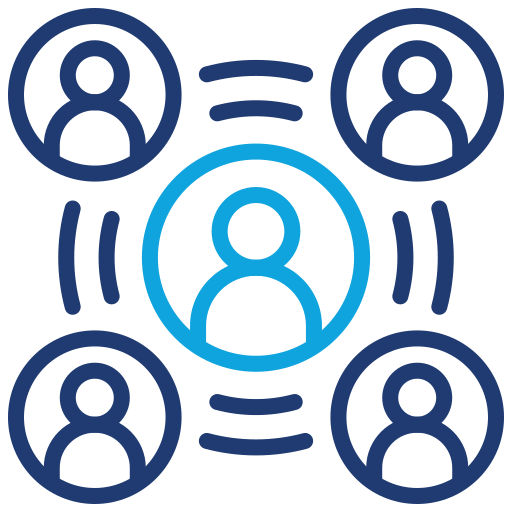
Imagine this: You launch a SaaS product, invest heavily in ads, and hustle for every single customer. Growth is steady but slow—until one day, a few happy users start referring their friends. Suddenly, your sign-ups skyrocket, and your customer acquisition cost (CAC) drops. What changed? You tapped into the power of referrals.
A well-designed referral program can be the growth engine that brings in 10x more customers with little additional cost. Let’s break down exactly how to create a highly effective SaaS referral program that drives exponential growth.
1. Why Referral Programs Work for SaaS
People trust recommendations from friends far more than they trust ads. According to Nielsen, 92% of consumers trust referrals from people they know. For SaaS businesses, this translates into:
- Lower acquisition costs (referrals cost less than paid ads).
- Higher conversion rates (referrals convert at 3-5x higher rates).
- Better retention (referred customers tend to stick around longer).
Example: Dropbox’s referral program helped them grow from 100,000 to 4 million users in 15 months. They offered free storage for both the referrer and the referee, creating a viral growth loop.
2. Designing the Perfect Referral Program
Not all referral programs succeed. The key is to design one that aligns with your product, audience, and incentives.
A. Define Your Goals
Before launching a referral program, clarify your primary objective:
- Do you want to increase free trial sign-ups?
- Do you want more paying customers?
- Are you focusing on enterprise leads or SMBs?
Each goal will affect how you design your referral incentives.
B. Choose the Right Incentives
Your referral rewards should be valuable and relevant to your users. The most successful referral programs offer incentives like:
| Type of Reward | Examples |
|---|---|
| Cash rewards | PayPal, Wise, and Revolut offer cash bonuses. |
| Discounts | Webflow offers subscription discounts for referrals. |
| Credits | Trello & Asana give premium feature access. |
| Extended trials | Many SaaS tools offer extra trial days. |
| Exclusive perks | Early access to new features or VIP support. |
🔹 Pro Tip: The best referral programs reward both the referrer and the new customer. (e.g., “Give $10, Get $10”)
3. How to Promote Your Referral Program
A great referral program won’t work unless users know about it. Here’s how to ensure maximum visibility:
A. Make It Visible
- Add a referral section in your product dashboard.
- Display referral CTAs in your emails, blog, and help center.
- Use pop-ups and banners to remind users about the program.
B. Integrate It into Onboarding
When users experience the “aha!” moment (realizing your product’s value), that’s the best time to prompt them to refer others.
- Show referral options after a successful action (e.g., “You just completed your first project! Want to invite a friend?”).
- Offer bonus rewards for referring friends during the first month.
C. Use Gamification & Social Proof
- Add leaderboards for top referrers.
- Show a progress bar (e.g., “Refer 3 more people to unlock this feature!”).
- Display customer success stories of people who benefited from referrals.
Example: Airbnb used gamification by showing users how close they were to earning travel credits, motivating them to refer more.
4. Tracking & Optimizing Your Referral Program
A referral program isn’t a “set it and forget it” strategy. You need to continuously track performance and optimize based on data.
A. Key Metrics to Track
- Referral Participation Rate: How many users share their referral links?
- Conversion Rate: How many referred users actually sign up or purchase?
- Customer Lifetime Value (CLV): Are referred users more valuable over time?
- Churn Rate: Do referred users retain better than non-referred users?
B. A/B Test Your Referral Process
- Test different incentive structures (cash vs. credits vs. discounts).
- Optimize referral messages (change CTAs, button placements).
- Experiment with one-sided vs. two-sided rewards (reward only referrer vs. both).
Example: PayPal A/B tested referral bonuses and found that offering $20 instead of $10 significantly increased sign-ups.
5. Case Study: How Dropbox Mastered SaaS Referrals
Dropbox’s referral program is one of the most famous in SaaS history. Here’s how they nailed it:
- Double-sided incentive: Both the referrer and the new user received free extra storage.
- Easy sharing: Users could invite friends via email or social media with one click.
- Gamification: They showed a progress bar indicating how much storage had been earned, encouraging more referrals.
- Strategic timing: Dropbox asked users to refer friends right after they uploaded their first file, ensuring engagement.
Result? A 60% increase in sign-ups and millions of new users acquired at almost zero cost.
Final Thoughts: Unlock 10x Growth with Referrals
A SaaS referral program isn’t just a marketing tactic—it’s a powerful growth engine that can compound over time. The key is to:
- Offer compelling, relevant incentives (cash, credits, discounts).
- Make it ridiculously easy to share (one-click invites, social media sharing).
- Promote it at the right moments (onboarding, milestones, pop-ups).
- Continuously track and optimize performance (A/B test rewards, messaging, and timing).
If done right, a referral program can reduce your CAC, increase retention, and drive exponential growth—all while making your customers feel like part of your brand’s success.
What’s the best referral program you’ve ever seen? Let’s discuss in the comments!
contact us at: https://lnkd.in/gihWy6sk.